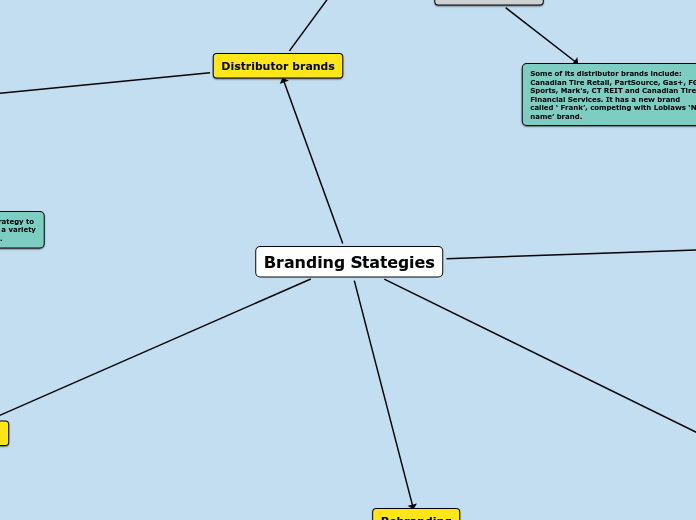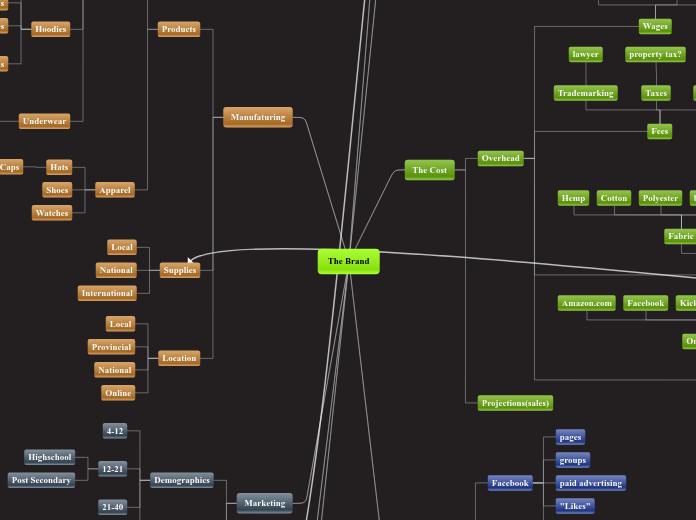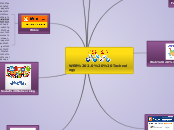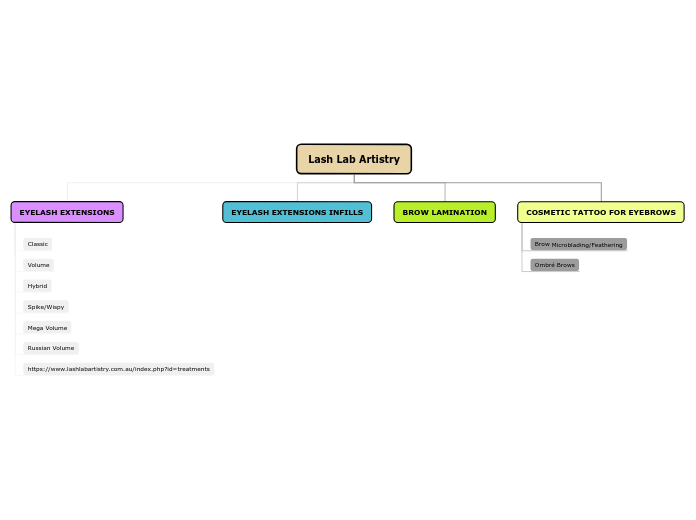Branding Stategies
Distributor brands
Retailers
Shopper's Drug Mart
Some of its distributor brands include: Canadian Tire Retail, PartSource, Gas+, FGL Sports, Mark's, CT REIT and Canadian Tire Financial Services. It has a new brand called ‘ Frank’, competing with Loblaws ‘No name’ brand.
Canadian Tire
A few of their private label lines include: Quo Cosmetics brand, Life Brand that has over 2000 products in the health categories and Sanis, which is a line of high quality generic drug products.
Walmart
Owns over 11,000 stores and is one of the biggest retailers in the world. It was the first to popularize the private label brands. It has 29,153 products across 319 private label brands in 20 categories.
No Frills
Store saves on labour costs by having no bakery, no butcher, and no free bags. It sold a line of generic products called "No Name" that consisted of 16 unbranded items in very basic yellow and black packaging.
Sobeys
Compliments, Sensations by Compliments, Compliments Balance, Compliments Organic, and Compliments GreenCare . The entire Compliments line boasts more than 5,000 products.
Loblaws
Is the largest Canadian food retailer, pharmacies, banking and apparel.
It’s distributor brands include President's Choice, No Name, Joe Fresh, T&T, Exact, Life, Seaquest, Azami, and Teddy's Choice. President’s choice line has around 1500 items.
Rationale Behind Distributor Brands
They use distributor brands as a strategy to attract bargain hunters, expanding a variety of items to drive loyalty and profits.
Value for money & gives them fewer products to choose from, but greater satisfaction, as they offer cheaper prices and better quality!
More is less: When customers have many brands and choices it makes them less keen to buy because they get into a dilemma and when they do make a decision, they are usually not satisfied with it.
They offer equal or better taste and quality when compared to leading national brands while saving shoppers money.
Market share for private label brands has risen in the past years and is expanding into new and diverse categories, specially in supermarkets.
Co-Branding
Examples: GoPro and Red Bull; Betty Crocker and Hershey’s; Nike and Apple.
Definition: When two well-known brands partner and introduce a third new product to the market.
Brand Extentions
Examples: Apple from personal computers into MP3 players; Cherry Coke from Coca Cola.
Definition: Is when a known brand starts selling a different type of product. It uses its brand name in a different product category.
Rebranding
Example When Coke Zero rebranded to Coca Cola Zero Sugar. The new package design looks more like Coca-Cola and has “Zero Sugar” written.
Definition: To change a brand’s name, symbol, or design, to create a different identity from its competitors in the market.
Repositioning
Example: Shoppers Drug Mart repositioned their private label line by launching a campaign called “Rediscover Life Brand” to help reacquaint consumers with what is already its largest health brand, to refamiliarize Canadians with its private label line.
Definition: To change the brand's identity. This includes changing things like the brand’s name, logo, colors, type font and tagline.









